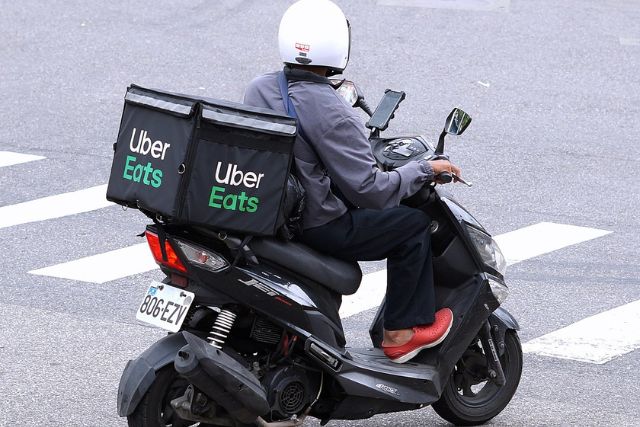As the popularity of food delivery services like Uber Eats continues to grow, it’s important to understand the insurance coverage that comes with these services. Accidents can happen, and knowing how to navigate Uber Eats insurance can help protect you as a driver or a customer.
In this article, we’ll explore the ins and outs of Uber Eats insurance, discussing what it covers, what it doesn’t cover, and how to make sure you’re fully protected while using the service.
Whether you’re a driver or a customer, read on to discover everything you need to know about safely navigating Uber Eats insurance.
Table of Contents
Understanding Uber Eats Insurance Coverage
Before we delve into bypassing Uber Eats insurance, let’s first understand the coverage it provides. When you’re delivering food as an Uber Eats driver, you’re covered by Uber’s commercial auto insurance.
This policy generally includes liability coverage, which protects you in case you cause damage to someone else’s property or injure someone while on a delivery trip.
Additionally, Uber Eats insurance typically provides contingent comprehensive and collision coverage. This coverage is meant to protect you from damages to your vehicle, subject to certain conditions.
It’s important to note that Uber Eats insurance is only active during the period when you have accepted a delivery request, and you are en route to the customer’s location.
When to Consider Alternative Insurance Options
While Uber Eats insurance covers you during active delivery trips, there are some situations where additional coverage might be necessary.
Here are a few scenarios where you might want to consider exploring alternative insurance options:
1. Vehicle Damage
Uber Eats insurance provides contingent comprehensive and collision coverage, but it may have deductibles or limitations that could leave you with out-of-pocket expenses.
If you’re concerned about potential high deductibles or inadequate coverage, it may be worth considering additional coverage to protect your vehicle.
2. Personal Injury
While Uber Eats insurance offers liability coverage for injuries caused by the driver, it may not provide coverage for your own injuries.
If you’re worried about medical expenses resulting from an accident, you might want to explore personal injury protection (PIP) coverage.
3. Non-Delivery Accidents
Uber Eats insurance only applies during active delivery trips. If you’re involved in an accident while driving for personal reasons or during periods of inactivity on the platform, the default insurance coverage may not apply.
In such cases, having personal auto insurance that covers both personal and commercial use of your vehicle is important.
Researching Additional Insurance Options
If you find yourself in one of the scenarios mentioned above or simply want extra protection as an Uber Eats driver, it’s important to research and understand the additional insurance options available to you. Here are some steps you can take to find suitable coverage:
1. Review Your Existing Policies
Start by reviewing your current personal auto insurance policy. Some policies may offer limited coverage for delivery driving, but many personal policies exclude commercial activities. If you’re unsure about your coverage, contact your insurance provider to discuss your options.
2. Contact Insurance Companies
Reach out to insurance companies that specialize in providing coverage for ride-sharing and food delivery drivers.
These companies understand the unique needs of drivers in the gig economy and can offer policies that fill any coverage gaps left by Uber Eats insurance.
3. Compare Quotes
Obtain quotes from multiple insurance providers to ensure you’re getting the best coverage at a competitive price.
Look for policies that cover both personal and commercial use of your vehicle and offer comprehensive coverage for property damage, bodily injury, and medical expenses.
Being Transparent with Insurance Providers
When exploring additional insurance options as an Uber Eats driver, it’s crucial to be transparent and provide accurate information to insurance providers. Here are some key points to keep in mind:
1. Disclose Your Activities
Clearly communicate your involvement with Uber Eats as a food delivery driver to the insurance providers you contact. It’s important to provide accurate details about your work, including the number of hours you spend on deliveries and the mileage you accumulate.
This transparency ensures that the insurance provider can accurately assess the risk associated with your activities and provide you with appropriate coverage.
2. Ask the Right Questions
When discussing insurance options with providers, make sure to ask specific questions regarding coverage for delivery driving.
Inquire about any limitations or exclusions that may apply, as well as any additional requirements or documentation needed to maintain coverage.
Being well-informed about the terms and conditions of your insurance policy will help you make the best decision for your needs.
3. Update Your Insurance Provider
Once you’ve obtained additional insurance coverage, be sure to inform your personal auto insurance provider about your work as an Uber Eats driver.
This ensures that your insurance policies are coordinated and that there are no gaps in coverage. Failure to disclose your involvement in delivery driving could result in a denial of claims or cancellation of your policy.
Prioritizing Safety on the Road
While insurance coverage is crucial for protecting yourself and your vehicle, it’s equally important to prioritize safety while delivering for Uber Eats. Here are some safety tips to keep in mind:
1. Maintain Proper Vehicle Maintenance
Regularly service your vehicle and ensure that it’s in good working condition. This includes checking your tires, brakes, lights, and other essential components. By keeping your vehicle well-maintained, you reduce the risk of accidents caused by mechanical failures.
2. Obey Traffic Laws
Adhere to all traffic laws, including speed limits, traffic signals, and road signs. Avoid aggressive driving behaviors such as speeding, tailgating, or running red lights.
Staying vigilant and obeying traffic laws reduces the likelihood of accidents and helps keep you and others safe on the road.
3. Minimize Distractions
Avoid distractions while driving, such as using your phone, eating, or engaging in activities that take your attention away from the road. Keep your focus on driving and be aware of your surroundings at all times.
4. Protect Yourself
As an Uber Eats driver, you’re exposed to various environments and neighborhoods. It’s essential to prioritize your personal safety.
Park in well-lit areas, lock your vehicle when making deliveries, and trust your instincts if you feel unsafe in a particular location. Your safety should always be your top priority.
Understanding the Insurance Claims Process
In the unfortunate event of an accident or damage while delivering for Uber Eats, it’s crucial to understand the insurance claims process to ensure a smooth resolution. Here are the general steps involved:
1. Report the Incident
Contact Uber Eats and report the accident or damage as soon as possible. Provide them with accurate details about the incident, including the date, time, location, and any relevant information about the parties involved.
2. Document the Scene
Take photos of the accident scene and any damages to your vehicle. This visual evidence can be helpful when filing your insurance claim and can support your case.
3. Contact Your Insurance Provider
Notify your personal auto insurance provider about the incident. They will guide you through the claims process and provide you with the necessary forms to complete.
4. Cooperate with Investigations
If required, cooperate with any investigations conducted by the insurance provider or the authorities. Provide any requested documentation or information promptly and accurately.
5. Follow up on the Claim
Stay in touch with your insurance provider to track the progress of your claim. Be prepared to provide any additional information or documentation they may request.
Remember, each insurance provider may have specific procedures and requirements for filing claims. It’s essential to familiarize yourself with the process outlined by your insurance company to ensure a smooth claims experience.
Utilizing Uber Eats Support
In addition to insurance coverage, Uber Eats provides support for drivers in various situations. If you encounter any issues or have questions related to insurance, consider reaching out to Uber Eats support.
They can provide guidance and assistance with insurance-related matters, including clarifying coverage details, addressing claims concerns, or connecting you with the appropriate resources.
You can contact Uber Eats support through the app or website. Be prepared to provide them with specific information regarding your situation so that they can assist you effectively.
It’s always beneficial to maintain open communication with Uber Eats to stay informed about any updates or changes to their insurance policies or support processes.
Consult with Legal or Insurance Professionals
If you have complex insurance concerns or find yourself facing challenges with the claims process, it may be helpful to seek advice from legal or insurance professionals.
Consulting with an attorney who specializes in insurance or personal injury law can provide you with valuable insights and guidance tailored to your specific circumstances.
Similarly, an insurance professional or broker can assist you in understanding your insurance coverage options and help you find the best policies that suit your needs as an Uber Eats driver.
They can navigate the complexities of insurance terminology and ensure that you have comprehensive coverage that adequately protects you and your vehicle.
Remember, professional advice can be beneficial when dealing with insurance matters, especially if you’re unsure about the intricacies of the policies or claims process.
Conclusion
As an Uber Eats driver, it’s important to be knowledgeable about the insurance coverage provided by the platform and to consider additional coverage when necessary.
Understanding the scope of Uber Eats insurance, researching alternative insurance options, prioritizing safety on the road, and being familiar with the claims process can help you navigate insurance matters effectively.
Always prioritize safety while delivering for Uber Eats, maintain transparency with insurance providers, and seek professional advice when needed.
By taking proactive steps to protect yourself, your vehicle, and your financial well-being, you can confidently pursue your work as an Uber Eats driver knowing that you have the appropriate insurance coverage in place.







